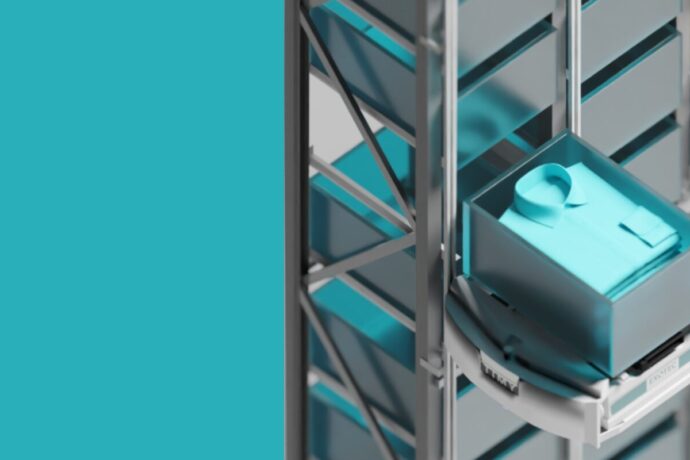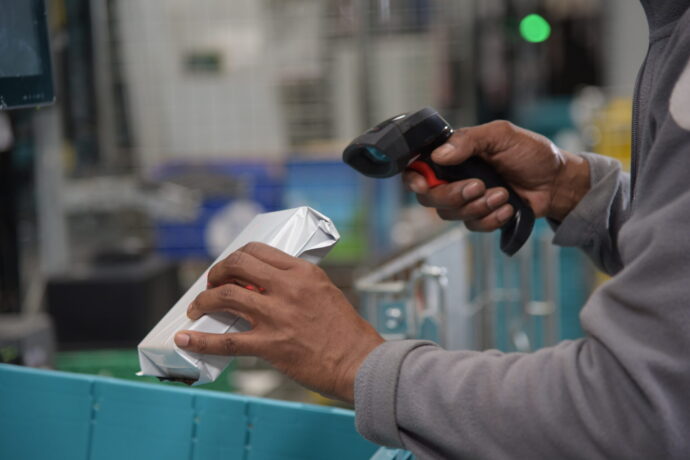
Autumn/Winter, Spring/Summer… Although they are still relevant, the major weather seasons are no longer, and have not been for a long time, the only factors impacting the supply chain in the clothing industry, which is marked by increasingly rapid seasonality and, above all, growing unpredictability. This article looks at how these changing temporalities are managed in the clothing sector, and what this means for day-to-day intralogistics.
Traditional clothing seasons
Originally, fashion sales were organised around two main seasons: Autumn/Winter and Spring/Summer. Gradually, however, a number of players in the fashion and clothing industry introduced inter-seasonal collections in their shops that overlapped the first two seasons (pre-fall, from May to June, and resort/cruise, from October to November). The idea was to limit the ‘void’ in shops between the two major collections and to introduce variety to consumers, thereby boosting sales.
On sale
Or how to skilfully manage the end of stocks. As early as the 19th century, clothing boutiques and other department stores introduced the concept of sales to sell off the last items at reduced prices, thereby reducing their stock until the next collection renewal. They are defined as follows in article L-310-3 of the French Commercial Code: ‘in practice, winter sales are organised at the end of January/beginning of February and summer sales are generally held from mid to late July until mid to late August’.
Today, there are still two main sales periods, at the beginning of the year (end of January-beginning of February) and mid-year (July-August), with variations depending on the continent and country, as well as the positioning and clientele of the brands themselves: Christmas, Valentine’s Day, back-to-school, Mother’s Day…

Simple supply chain diagrams…
So right from the start of the industrialisation of clothing production and distribution, there was a relative lack of correlation between the actual seasons and the fashion seasons, which were designed more to encourage consumption and improve stock management. Nevertheless, the basic situation was relatively clear. In clothing shops, collections were renewed on a fixed basis every 6 months, with intermediate seasons in between.
In terms of purchasing supplies, relations with subcontractors, stock management and distribution, this was a relatively simple scheme to operate. It was a matter of anticipating demand as far as possible, obtaining supplies accordingly, and delivering on time. In the warehouses, these classic seasonal logics, which are still true today, meant above all being able to manage clothing products of limited volume – because they were lighter – in summer, and larger volumes in winter. All this in a constant storage space whatever the season.
… Devenus de plus en plus complexes
At the end of the 20th, in parallel with sales, and under the influence of fast-fashion, operators in the sector began to intersperse inter-seasonal collections, which can number several dozen a year for certain so-called ‘fast-fashion’ brands. These new models, in which items are pushed onto consumers on a much more regular basis, require complex, highly efficient and often tailor-made supply chain models to serve the business models of these companies. This ‘push flow’ approach means that warehouses have to take delivery peaks prior to the collection, and need to be able to manage a mass assortment in shops or order preparation centres. Here, restocking is generally done on a 1-for-1 basis: once the item has been pushed, the chances of it being sold more than twice are fairly slim.
Trends come and go. Quickly.
In addition to these simple or ‘augmented’ seasonal patterns, which have long been integrated by the clothing supply chain, seasonal sales peaks are now increasingly driven by extrinsic factors, requiring unfailing adaptability, particularly in their warehouses: the impact of fashion weeks, the promotion of a brand by a celebrity or influencer, or quite simply trends generated by well-styled average citizens seen in the street (‘street style’).

A season-proof warehouse: checklist
So, if you operate or plan to operate a clothing warehouse, what are the key points to address to ensure that it can withstand changes and trends, whether predictable… or not.
- Managing uncertainty. Driven by trends, and despite increasingly sophisticated analysis, the biggest players in the sector sometimes find it hard to know when there will be particular interest in a given item. In your warehouse, this means that any item must be quickly accessible to your operators, at any time.
- Managing success. Your product and your marketing are good, your salespeople are good and your orders are increasing? Fair enough, but don’t let your logistics warehouse stop you from riding the wave. It is essential that your supply chain strategy includes the possibility of rapidly increasing throughput, and even storage volume, by automating all or part of your processes.
- Managing stock rotation. As we’ve seen, the seasons pass much more quickly than they used to. Your stock rotation time, i.e. your ability to empty and refill your warehouse in record time, is therefore an essential factor to take into account.
- Managing omnichannel operations. Here, the challenge is to successfully manage different order profiles (mass shop assortment, restocking, preparation of single orders, etc.) in the same warehouse, while managing the specific features of these shipments (delivery according to item sequences, for example, to optimise the supply of shops according to their layout).
- Enable integration with third-party tools. Once again, depending on the order profile, specific equipment (conveyors, specific packaging machines, etc.) will need to be connected to your existing or future equipment and be able to handle your items, thanks to high-performance warehouse software, for example.
- Manage multi-SKU locations. As the seasons change, your orders may be profiled according to pack or batch logic? It can be interesting to manage multiple SKUs in the same location (bin or box), provided that you are able to subdivide them to make order picking easier, and that your items are small enough to be compartmentalised.
- Manage RFID (Radio-Frequency Identification) and NFC (Near Field Communication). These are small technological revolutions in intralogistics, making it possible to identify the nature and location of an item using RFID, or to electronically read references using NFC. Above all, they enable you to manage your stocks and prepare your orders or restock more quickly. Provided that your intralogistics system, from start to finish, fully integrates support for these increasingly widespread technologies, from preparation to dispatch, including any replenishment required, particularly when tensions at these different stages are increasing.
- Managing labour shortages. Bad news for you and your next business peak: fewer and fewer people want to work in warehouses. Your workforce is certainly shrinking, but you can limit this trend by automating some of your intralogistics processes, such as picking, which are particularly labour-intensive and a source of workplace suffering. This will also give you the opportunity to assign your staff to tasks that are more satisfying and generate more added value for your company, such as personalising orders, something to which consumers are increasingly attentive.
- Unleashing innovation. In the way it establishes its forecast, in its information systems, through automation solutions, or social innovations. We’ve devoted a full article to innovation in clothing warehouses here.
Solutions tailored to the clothing industry
Exotec designs, produces and maintains robotic solutions for warehouses worldwide. In particular for the ready-to-wear and footwear sectors, which account for almost 50% of our projects. Our Skypod® system is particularly well-suited to the challenges of clothing warehouses, offering the performance, responsiveness and flexibility that intralogistics operators in this sector need.
Share
Insights
-
October 27,2025Supply Insights | Spare Parts
-
October 21,2025How to combine ESG & industry? (podcast)
-
August 5,2025Value Chain vs. Supply Chain: What's the Difference?
News
-
November 4,2025Exotec bolsters its leadership team with the appointments of a Chief People Officer and EVP of Finance
-
October 15,2025Exotec Celebrates 10 Years of Innovation: Driving A New Era of Warehouse Technology
-
September 10,2025Exotec and E80 Group Partner to Streamline End-to-End Warehouse Automation for CPG and Grocery Industries
Ready to transform your warehouse?
Let us show you how we can take your order preparation to the next level.

